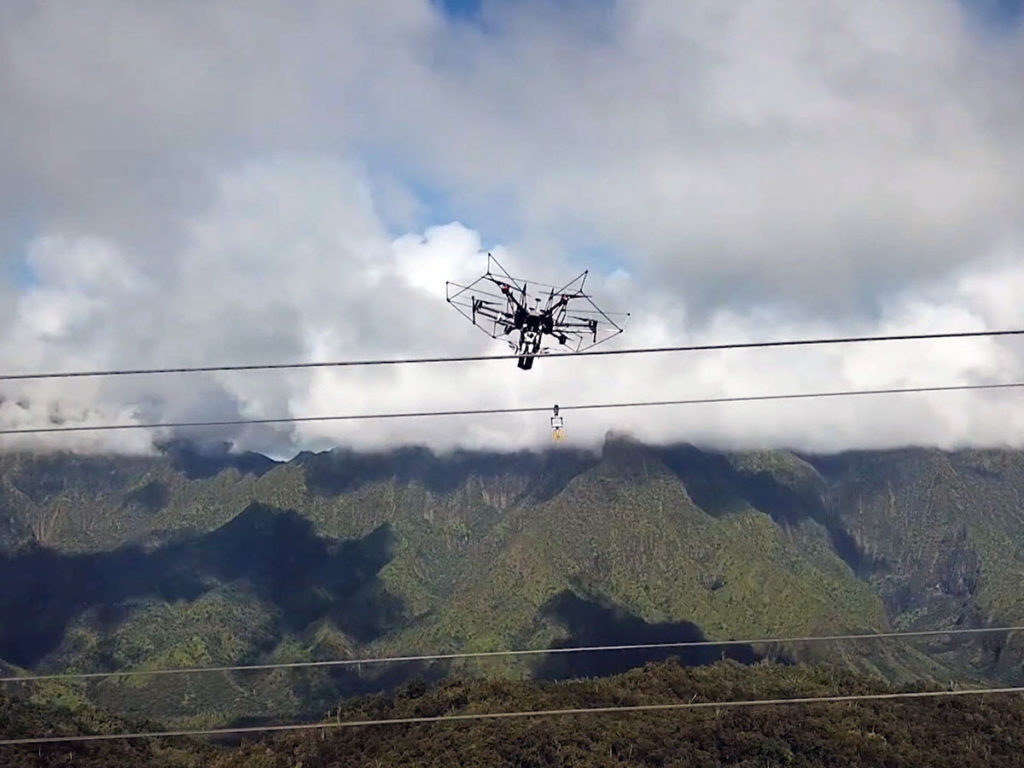
A Hawaiian electric cooperative is upping its conservation game as a pioneer of specialized drones to deploy bird flight diverters on its power lines that span remote and dramatically rugged terrain.
Kaua‘i Island Utility Cooperative is placing hundreds of advanced diverters along 740 spans of power line throughout the island’s dense tropical rainforests, jagged mountain peaks and steep valleys.
“When complete, we will have installed tens of thousands of diverters using drones,” said Beth Tokioka, communications manager for the Lihue-based co-op.
“Some areas where diverters were needed were in mountainous or forested areas where use of bucket trucks was not possible. Drones were the only way we could access these lines safely. They were an extremely efficient tool for completing these installations.”
Historically, utilities have used helicopters or large bucket trucks for such remote installations, but an upcoming report from NRECA finds that cost and safety factors are driving a trend toward the use of unmanned aerial vehicles for these jobs.
“The use of unmanned aerial vehicles offers a new way to install certain types of overhead marking devices over more traditional approaches,” notes the report, “New Trends in Avian Protection.”
“UAV-supported line marking can reduce costs and increase safety. NRECA recommends cooperatives discuss these options with qualified developers, other utility users, and qualified contractors before pursuing one option or one vendor to best fit the cooperative’s needs and budgets.”
KIUC has been testing different types of technologies and devices to minimize bird strikes for more than a decade. Diverters were first used on a small scale to test their efficacy. About two years ago, the co-op started working with new data on where strikes were most frequently occurring, which allowed for a more strategic installation, Tokioka said.
“This project is also proving to be very effective in our effort to minimize bird strikes with power lines,” she said. “Any cooperatives facing the same challenge with difficult terrain should consider the use of drones as a safe and efficient installation method.”
KIUC is using a combination of passive reflective and LED diverters. Each is effective at keeping specific avian species away, including three species of endangered seabirds and five species of threatened and endangered waterbirds.
“Reflective diverters are small devices that glow in the dark,” said John Cox, KIUC’s transmission and distribution manager. “LED diverters use a small solar panel that charges during the day and produces light that’s visible to birds throughout the evening.”
The co-op plans to continue using drones to install and maintain its diverters.
“KIUC has a responsibility to protect our natural environment,” Tokioka said. “We’re in the process of developing a longer-term Habitat Conservation Plan that will formalize current minimization activities in relation to requirements of the federal and state endangered species regulations.”
Watch a video of the bird diverters being installed.
Cathy Cash is a staff writer for NRECA.